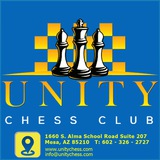Under the cover of the Ne5, Black quietly prepares a decisive attack. White has nothing with which to oppose it.
White is suffering, so he might as well have something to suffer for! More practical chances were offered by 31.Bxa4, although after 31...g4 (Black also has a dangerous attack after 31...f3) 32.Bd1 Kh7!, with the threat of 33...f3, Black should win in any case.
31...g4 32.Rxf4 Rxf4 33.Rxf4 Rxf4 34.g3 Nf3+ 35.Kf2 Qxh3 36.gxf4 g3+ 37.Kxf3 g2+ 38.Kf2 Qh2 0-1
With the help of a tactical operation, White simplifies the position, and even obtains some material advantage.
In a ‘normal’ course of events (26.Nxf6 Nxf6), Black retains a slight advantage, due to White’s weak pawn structure on the queenside.
In a ‘normal’ course of events (26.Nxf6 Nxf6), Black retains a slight advantage, due to White’s weak pawn structure on the queenside.
Although White has obtained two knights for the black rook, his knights are positioned on the edge of the board. Black can attack the weak white pawns on the queenside. The position remains double-edged.
Black was counting on the fact that the short-range knights find it difficult to fight against an outside passed pawn. But Black had missed something in his calculation of concrete variations.
Correct was 34...Ke5! 35.Nfe4 Rxb3 36.Nf3+ Kd5 37.Nf6+ Kd6, which allows Black to continue the battle, probably with a drawn outcome.
Correct was 34...Ke5! 35.Nfe4 Rxb3 36.Nf3+ Kd5 37.Nf6+ Kd6, which allows Black to continue the battle, probably with a drawn outcome.
35.f4 Rb1+ 36.Ke2 Rb2+ 37.Kf3 Rb3+ 38.Kg4 Rb2 39.g3 b5 40.Nfe4+ Kd5 41.f5 b4 42.f6 Ra2 43.f7 Ra8 44.Nh7 b3 45.Nd2 b2 46.Kf3 Kd4 47.Ke2 c5 48.f8=Q Rxf8 49.Nxf8 c4 50.Ne6+ Kd5 51.Nf4+ Kd4 52.Nb1 1-0
